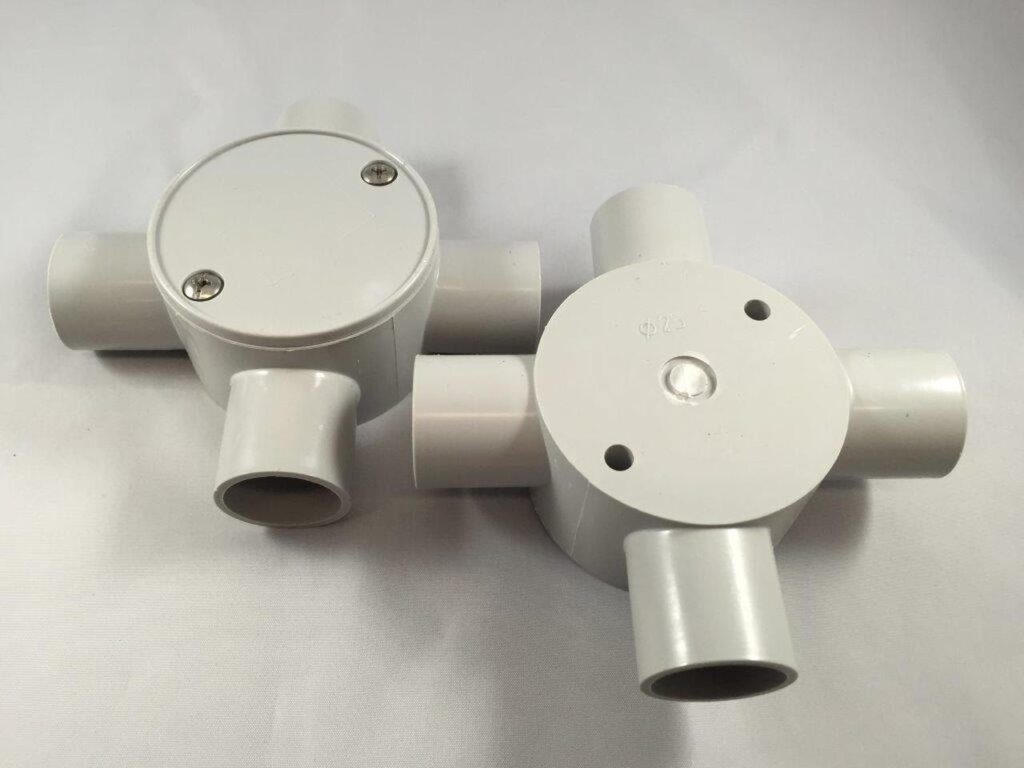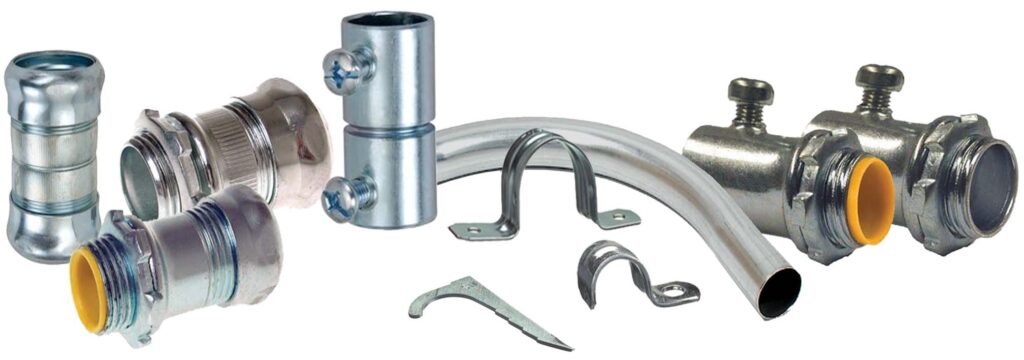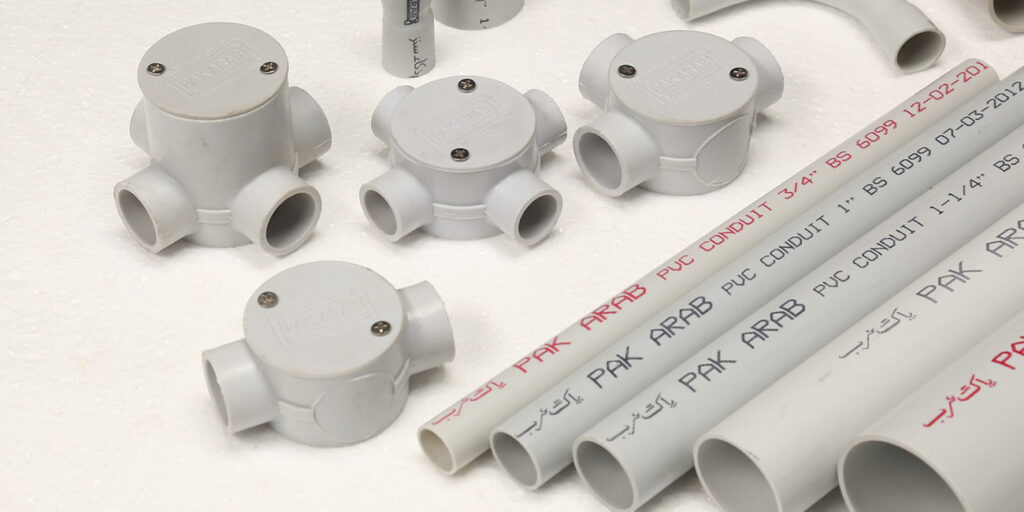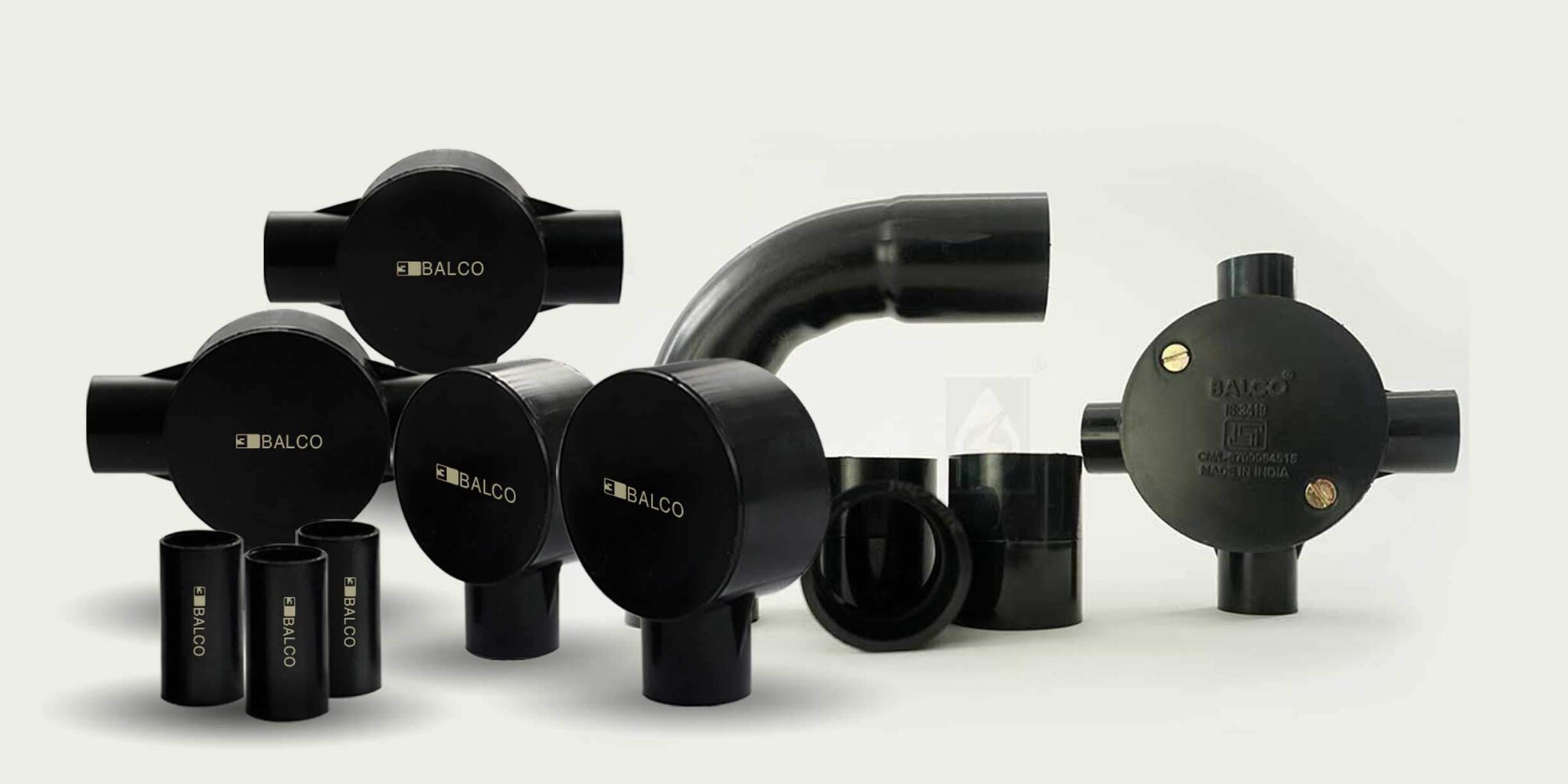Conduit fittings are an essential component in electrical systems, providing support, protection, and connectivity. Understanding the different types of conduit fittings, their applications, and the proper installation process is vital for ensuring the safety and efficiency of electrical installations. In this article, we will delve into the world of conduit fittings, exploring the basics, discussing their significance in electrical systems, and providing a step-by-step guide for their proper installation.
Understanding Conduit Fittings
The Basics of Conduit Fittings
Conduit fittings, also known as electrical fittings, are used to connect and secure electrical conduits together, providing mechanical protection and grounding. These fittings are typically made from various materials, including metal and plastic, and are available in different sizes and configurations to accommodate different conduit types and installations.
When it comes to electrical systems, every component plays a crucial role in ensuring safety and functionality. Conduit fittings are no exception. They serve as the backbone of electrical conduit systems, offering a reliable and secure connection for electrical wiring.
But what exactly makes conduit fittings so important? Let’s delve deeper into their significance and explore the benefits they bring to electrical systems. Click here for a comprehensive guide to light switches.

Importance of Conduit Fittings in Electrical Systems
Conduit fittings are essential in electrical systems across various industries and settings, including residential, commercial, and industrial applications. These fittings offer numerous benefits, such as:
- Mechanical Protection: Conduit fittings shield electrical wiring from physical damage, ensuring the longevity and reliability of electrical systems. Whether it’s in a bustling construction site or a residential building, the risk of accidental impact is always present. Conduit fittings act as a protective barrier, preventing any harm to the electrical wiring and preserving the integrity of the entire system.
- Environmental Protection: With waterproof and weatherproof variants available, conduit fittings safeguard electrical wiring from moisture, dust, and other environmental elements. In outdoor installations or areas prone to high humidity, such as basements or industrial facilities, the risk of water damage is a constant concern. Conduit fittings with appropriate seals and gaskets provide an extra layer of protection, ensuring that the electrical system remains safe and functional even in challenging conditions.
- Grounding: Conduit fittings provide an effective grounding path, minimizing the risk of electrical shock and ensuring the safety of individuals and equipment. Grounding is a crucial aspect of electrical systems, as it diverts any excess electrical current away from sensitive components and into the ground. Conduit fittings with grounding capabilities ensure that electrical circuits remain stable and secure, reducing the chances of electrical faults and potential hazards.
- Flexibility: Different types of conduit fittings cater to various installation requirements, allowing for flexibility and adaptability in electrical systems. Whether it’s a straight connector, elbow, or coupling, there is a fitting available for every situation. This versatility enables electricians and installers to navigate around obstacles, make turns, and create complex conduit configurations with ease. The ability to customize the conduit path ensures efficient and effective installations, even in challenging environments.
- Compliance: Conduit fittings adhere to industry codes and regulations, ensuring that electrical installations meet safety standards. Electrical systems must comply with specific guidelines to ensure the safety of occupants and the proper functioning of equipment. Conduit fittings are designed and manufactured to meet these requirements, providing peace of mind to electricians and building owners alike.
As you can see, conduit fittings are not just simple connectors. They are vital components that contribute to the overall reliability, safety, and efficiency of electrical systems. From protecting against physical damage to ensuring compliance with regulations, these fittings play a significant role in maintaining the integrity of electrical installations.
Next time you see a conduit fitting, remember its importance and the many benefits it brings to the world of electrical systems.
Exploring Different Types of Conduit Fittings
When it comes to electrical installations, choosing the right conduit fittings is crucial for ensuring the safety and efficiency of the system. Conduit fittings not only provide protection for electrical wiring but also facilitate easy installation and maintenance. In this article, we will explore three common types of conduit fittings: rigid conduit fittings, flexible conduit fittings, and liquid-tight conduit fittings.

Rigid Conduit Fittings
Rigid conduit fittings are widely used in industrial and commercial applications due to their durability and rigidity. Made from materials like galvanized steel or aluminum, these fittings provide robust protection and are suitable for demanding environments.
Common types of rigid conduit fittings include elbows, couplings, connectors, and straps. These fittings are typically threaded for secure connections and are available in various sizes to accommodate different conduit diameters. Whether it’s a heavy-duty manufacturing facility or a commercial building, rigid conduit fittings offer the strength and reliability needed to safeguard electrical wiring.
Flexible Conduit Fittings
Flexible conduit fittings, also known as liquid-tight fittings, are designed for applications that require flexibility and ease of installation. These fittings are commonly used in areas where wiring needs to navigate tight corners or accommodate movement.
Flexible conduit fittings are made from non-metallic materials such as PVC or nylon, which offer resistance to corrosion and provide excellent protection against moisture and chemicals. These fittings often feature a unique sealing mechanism that ensures a watertight and secure connection. With their ability to bend and flex, flexible conduit fittings are ideal for installations in areas with limited space or where wiring needs to be routed around obstacles.
Liquid-tight Conduit Fittings
Liquid-tight conduit fittings are specifically designed to protect electrical wiring in areas exposed to liquids, such as outdoor installations or damp environments. These fittings provide a high level of resistance against water, oil, and other fluids, preventing damage and maintaining the integrity of electrical systems.
Typically made from materials like stainless steel or non-metallic compounds, liquid-tight conduit fittings feature a sealing gasket that ensures a watertight connection. Common types of liquid-tight fittings include connectors, elbows, and adapters. These fittings are often used in industries such as wastewater treatment, food processing, and chemical plants, where the presence of liquids poses a constant threat to electrical systems.
Choosing the right conduit fittings for your electrical installation is essential for meeting safety standards and ensuring the longevity of your system. Whether you opt for rigid conduit fittings for their durability, flexible conduit fittings for their versatility, or liquid-tight conduit fittings for their resistance to liquids, each type offers unique benefits that cater to specific installation requirements. By understanding the different types of conduit fittings available, you can make an informed decision and create a reliable electrical infrastructure.
Applications of Conduit Fittings
Conduit fittings are versatile components that find applications in various settings, including residential, commercial, and industrial environments. These fittings play a crucial role in ensuring the safety, reliability, and optimal performance of electrical systems. Let’s explore the different applications of conduit fittings in more detail:
Residential Use of Conduit Fittings
In residential settings, conduit fittings are commonly employed during electrical installations and renovations. These fittings ensure the safety and reliability of electrical systems within homes, protecting the wiring from potential hazards and offering flexibility in routing the wiring.
Conduit fittings provide homeowners with the peace of mind that their electrical systems are well-protected. They are particularly useful in areas exposed to moisture, such as kitchens and bathrooms, where the risk of electrical damage is higher. By using liquid-tight conduit fittings, homeowners can ensure a secure installation that can withstand these challenging environments.
Moreover, conduit fittings offer the flexibility to easily add or modify electrical circuits in residential settings. This allows homeowners to adapt their electrical systems to changing needs and technological advancements without the hassle of rewiring.
Commercial Use of Conduit Fittings
Commercial buildings require robust electrical systems to support a wide range of electrical loads and equipment. Conduit fittings play a critical role in these installations by providing durability, protection, and easy maintenance.
From office spaces to retail establishments, conduit fittings offer a solution for organizing and protecting electrical wiring, ensuring optimal performance and minimizing downtime. These fittings can be used to route wiring through walls, floors, and ceilings, providing a neat and professional appearance.
Additionally, conduit fittings help meet regulatory requirements and ensure compliance with building codes in commercial buildings. They provide a means for grounding electrical systems, reducing the risk of electrical shocks and ensuring the safety of employees, customers, and visitors.
Industrial Use of Conduit Fittings
In industrial settings, electrical installations face harsh conditions and heavy-duty applications. Conduit fittings designed for industrial use provide the necessary protection, grounding, and flexibility to withstand extreme environments and rugged installations.
Industrial facilities, such as manufacturing plants and warehouses, rely on conduit fittings to safeguard electrical systems against physical damage, humidity, and corrosive agents. Rigid conduit fittings, in particular, are well-suited for these environments, offering enhanced durability and resistance to impact.
Furthermore, conduit fittings, when combined with proper grounding techniques, help prevent electrical disturbances and ensure the safe and reliable operation of machinery and equipment in industrial settings. They provide a pathway for electrical currents and help dissipate any excess energy, reducing the risk of electrical malfunctions and equipment damage.
Overall, conduit fittings are indispensable components in electrical installations across various settings. Whether in residential, commercial, or industrial applications, these fittings provide the necessary protection, organization, and flexibility to ensure the optimal performance and safety of electrical systems.

Step-by-Step Guide to Installing Conduit Fittings
Preparing for Installation
Prior to installing conduit fittings, it is essential to plan the layout and route of the electrical conduits. Measure and mark the conduit lengths, taking into account any corners, bends, or obstacles that may require fittings.
Ensure that all required tools and materials are readily available, including conduit, fittings, cutting tools, and fasteners. Additionally, check local electrical codes and regulations to ensure compliance throughout the installation process.
Installing the Conduit Fittings
Start the installation process by cutting the conduit to the required lengths, employing appropriate cutting tools for the conduit material. Smooth the edges of the conduit to prevent injury and facilitate easy fitting insertion.
Next, attach the conduit fittings to the conduit ends using the appropriate fittings for the specific conduit type. Ensure a secure connection by tightening the fittings according to the manufacturer’s instructions. Use locknuts or compression fittings for added stability and vibration resistance.
Assemble the conduit fittings as needed, utilizing elbows, couplings, and connectors to navigate corners and connect different conduit sections. Secure the fittings with straps or appropriate fasteners, ensuring that the conduit is properly supported and held in place.
Safety Measures During Installation
During the installation process, it is crucial to adhere to safety protocols to prevent accidents and injuries. Always de-energize the electrical circuits before working with conduit fittings and avoid working in wet or damp conditions.
Wear appropriate personal protective equipment, such as gloves and safety glasses, when handling conduit fittings. Additionally, use insulated tools and follow proper electrical grounding techniques to minimize the risk of electrical shock.
Regularly inspect the fittings and conduit for any signs of damage or wear, and address any issues promptly to maintain the integrity of the electrical system.
In Conclusion
Conduit fittings are indispensable components in electrical systems, offering protection, support, and connectivity. By understanding the basics of conduit fittings, exploring the various types available, and following the proper installation procedure, individuals can ensure the safe and efficient operation of electrical installations across residential, commercial, and industrial settings.
Remember to consult local codes and regulations and practice safety measures during the installation process. By paying attention to these crucial details, you can enjoy the benefits of conduit fittings, including enhanced durability, protection, and compliance with industry standards.
